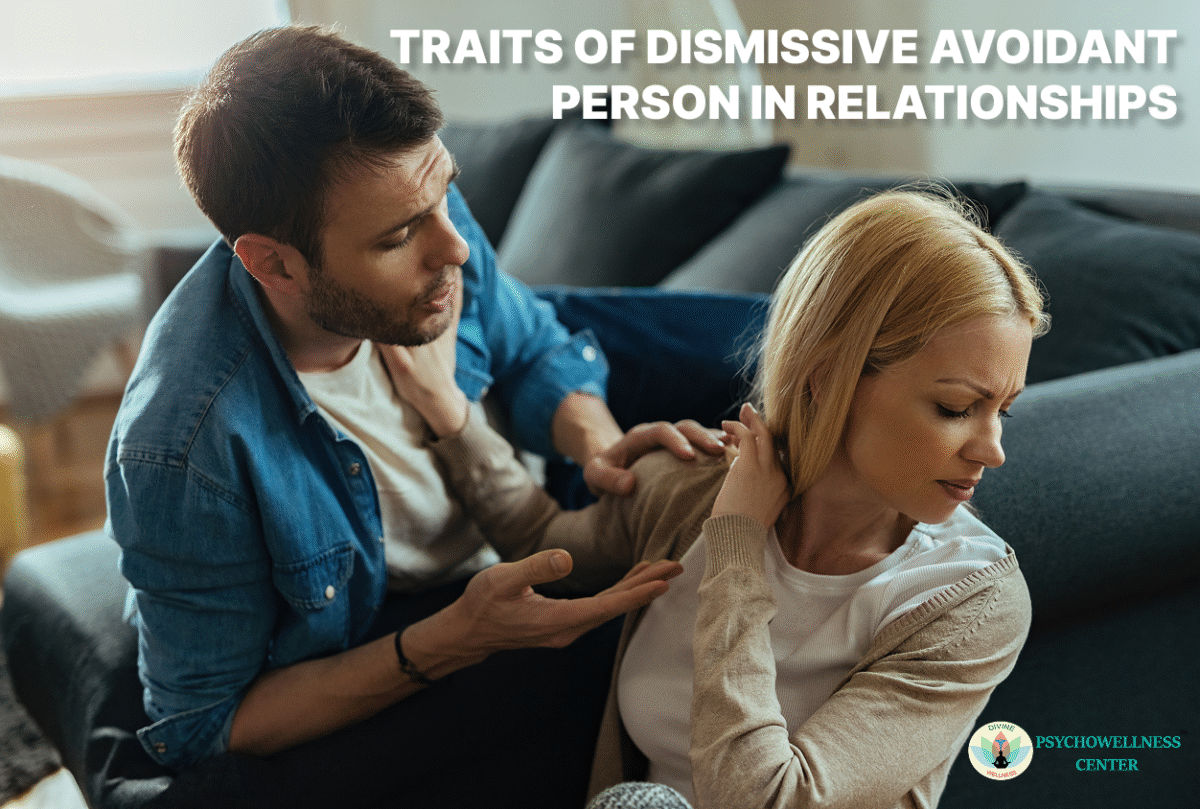Have you ever felt like you’re constantly trying to reach someone who keeps an invisible wall around themselves? Or perhaps you’re the one who instinctively pulls back when things get too close? If so, you might be encountering the complex world of dismissive avoidant attachment in relationships.
It’s a common scenario: one person yearns for closeness, while the other seems to expertly dodge intimacy. This isn’t about not caring; it’s often a deeply ingrained way of relating that stems from early life experiences. Dismissive avoidant individuals often learned to be fiercely independent, believing that relying on others leads to disappointment or vulnerability. They developed a powerful self-reliance, which, while an asset in many areas of life, can become a significant hurdle in the realm of emotional connection.
What is Dismissive Avoidant Attachment?
People with dismissive avoidant attachment strive to be independent and rely on themselves, which often means giving up emotional closeness. Individuals with this attachment style often see themselves as independent and might undervalue the significance of emotional closeness. This may cause obstacles in romantic relationships, resulting in miscommunications and emotional separation.
Key Traits of Dismissive Avoidant Individuals
- Emotional Detachment
One of the most prominent traits of dismissive avoidant individuals is their emotional detachment. They frequently find it difficult to convey their emotions and can seem detached or uninterested. This detachment stems from a fear of vulnerability, which can make it challenging for their partners to connect on a deeper level.
- Fear of Closeness
While they may crave companionship, dismissive avoidant individuals often fear closeness. This anxiety or stress may show itself as a hesitancy to talk about emotions or the relationship’s future. They might keep their partners at arm’s length, leading to frustration and confusion.
- Self-Sufficiency
These individuals pride themselves on their independence. They may believe that relying on others is a sign of weakness and often prefer to handle problems alone. This self-sufficiency can be misinterpreted as a lack of interest or investment in the relationship.
- Minimising Emotional Needs
People who are dismissive avoidant frequently minimise both their own and their spouses’ emotional needs. They might think that expressing needs is unnecessary or burdensome, which can lead to unmet expectations and disappointment in the relationship.
- Difficulty with Intimacy
Intimacy can be particularly challenging for those with a dismissive avoidant attachment style. They may enjoy physical closeness but struggle with emotional intimacy. This can create a disconnect that leaves their partners feeling unfulfilled.
Causes of Dismissive Avoidant Attachment
Early life events often lead to dismissive avoidant attachment. Children who grow up with caregivers who are emotionally unavailable or dismissive of their needs may learn to suppress their emotions and seek independence as a survival mechanism. Over time, this coping strategy becomes ingrained, shaping how they approach adult relationships.
Approaches for Navigating Relationships with Dismissive Avoidant Individuals
Fostering healthy connections begins with recognizing the characteristics of dismissive avoidant people. Here are some approaches that can help:
- Practice Patience and Understanding
It’s essential to recognize that dismissive avoidant individuals may need time to process emotions. Patience is key. It can be helpful to provide a secure environment where they can express their emotions without fear of criticism.
- Encourage Open Communication
Establishing open lines of communication is crucial. Encourage your partner to share their thoughts and feelings, even if it feels uncomfortable. To express your feelings without making others feel judged, use “I” statements.
- Set Boundaries
While it’s important to be supportive, it’s equally crucial to establish boundaries. This helps both partners understand each other’s needs and limits, fostering a healthier dynamic.
- Seek Professional Help
Therapy can be a valuable resource for those with dismissive avoidant attachment. A trained therapist can help individuals explore their attachment style and work through emotional barriers. Couples therapy can also be beneficial, providing a space for both partners to address their concerns together.
- Focus on Building Trust
Building trust takes time, especially for those who are naturally inclined to avoid emotional intimacy. Celebrate little successes in connection and communication, and take part in activities that deepen your relationship.
Conclusion
Navigating a relationship with a dismissive avoidant individual can be challenging, but understanding their traits and behaviours can lead to more meaningful connections. By practising patience, encouraging open communication, and seeking professional support, both partners can foster a deeper emotional connection. It’s important to remember that change takes time, and every small step towards vulnerability can lead to a healthier, more fulfilling relationship.
If you’re feeling distant, emotionally disconnected, or uncertain about your relationship dynamics, speaking to a mental health professional can help you gain clarity and take empowered steps forward. Individuals and couples dealing with avoidant attachment patterns can receive assistance from qualified therapists at the Psychowellness Center in Janakpuri and Dwarka Sector-17, Delhi. Prefer the privacy of home? TalktoAngel connects you with top psychologists across India through secure online therapy. Reclaiming your emotional well-being is a powerful step toward healthier relationships. Call 011-47039812 or 7827208707 to begin your journey.
Seek guidance from Dr. R.K. Suri, a prominent clinical psychologist, and Ms. Swati Yadav, a well-known counseling psychologist.
This blog was posted on 22 July 2025
References
- Bowlby, J. (1969). Attachment and Loss, Vol. 1: Attachment. Attachment and Loss. New York: Basic Books. (Foundational work on attachment theory)
- Levine, A., & Heller, R. (2010). Attached: The New Science of Adult Attachment and How It Can Help You Find—and Keep—Love. TarcherPerigee. (Popular and accessible book on adult attachment)
- Professional Tips to Communicate with an Avoidant Partner | Psychowellness Center
- Difference Between the Need for Space, Being Avoidant, and Neglectful | Psychowellness center

